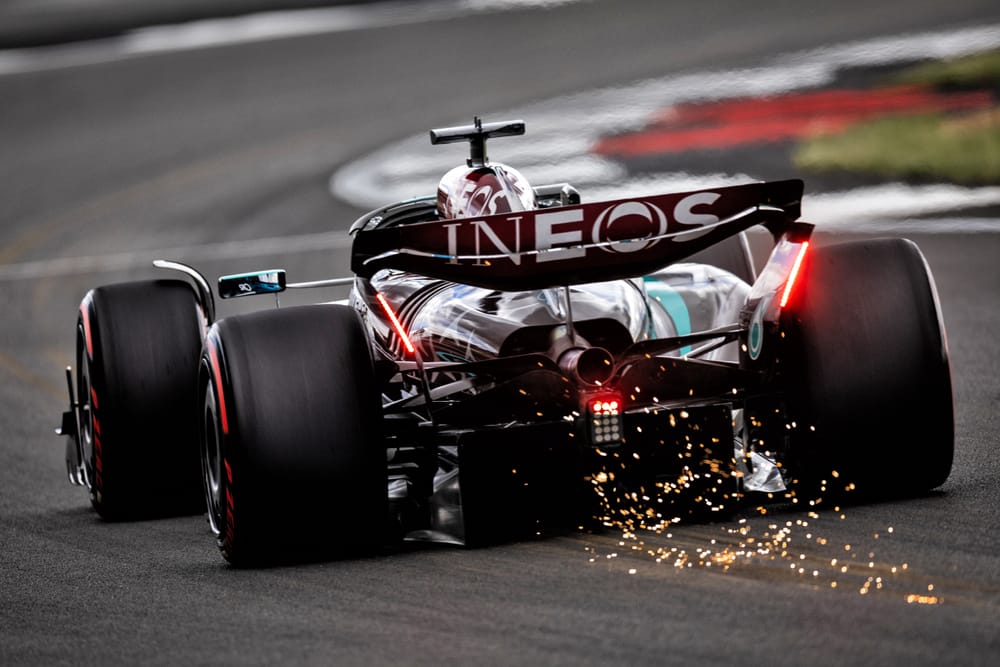Up Next

There’s obviously a feel-good element to the outcome of three British drivers in the top three of their home race, rewarding those spectators who braved a day of soaking to be at Silverstone.
But behind that headline on Saturday at the British Grand Prix was a fascinating example of game theory. It was between McLaren and Red Bull, but it allowed Mercedes to come through the middle to secure the front row, George Russell from Lewis Hamilton.
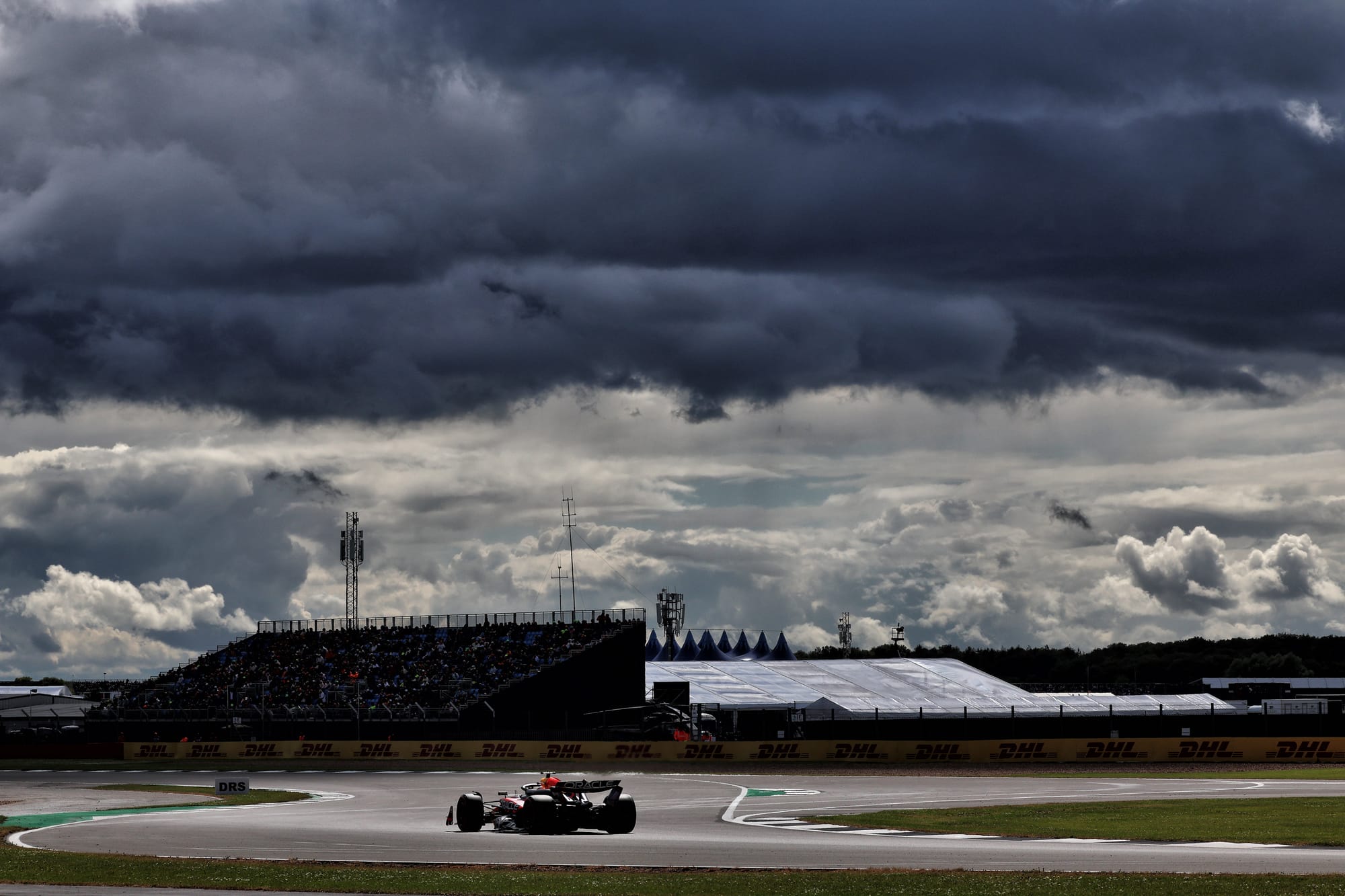
For a Formula 1 car, Silverstone is now a low-drag track and has been for some years. Other categories find laptime from loading their cars up with wing, but F1 cars have so much high-speed grip that they are all pretty much flat (in qualifying) through Abbey, Copse and Maggotts.
Your speed through those corners in an F1 car is determined solely by the speed at which you arrive at them. The car sees them as kinks, not corners. So, counter-intuitively, if you run a lower wing, you’ll go through the corner quicker. Given that you’ll also be faster down the straights, it’s a no-brainer to run a low-downforce set-up at Silverstone.
But how low? There are still the low-speed sections (the Village Loop, Brooklands-Luffield, and Vale) where wing will find you laptime. Then there are the complications of tyre deg. More wing will usually mean better tyre performance through a race stint.
Finally, there’s the weather, inevitably a major consideration at Silverstone and especially so this weekend. More wing is super-valuable in wet and windy conditions - the sort which have prevailed through much of the weekend so far and which are expected to continue on and off into Sunday.
Red Bull and McLaren have shown a small but definite edge over Mercedes and Ferrari over the last few races. Which has left them eyeing each other through the practices, and reacting accordingly. Wing level is the battleground in this game of cat and mouse.
Because they feel they have an edge over the third- and fourth-fastest cars, they may feel they can surrender some qualifying performance in exchange for whatever they feel they need on race day to combat the other. Without losing grid positions to the odd Mercedes or Ferrari set up to optimise qualifying.
So McLaren arrived here with a low-downforce rear wing but a choice of three beam wings - low, medium and high - to tweak as needed. Red Bull’s main wing was bigger. McLaren ended up opting for the highest downforce of the beam wings to combat as far as possible all that Red Bull main wing downforce. As recalled in our Austria qualifying analysis, Red Bull’s great underbody downforce and super-effective DRS often allows it the luxury of running a bigger wing without all the usual penalty.
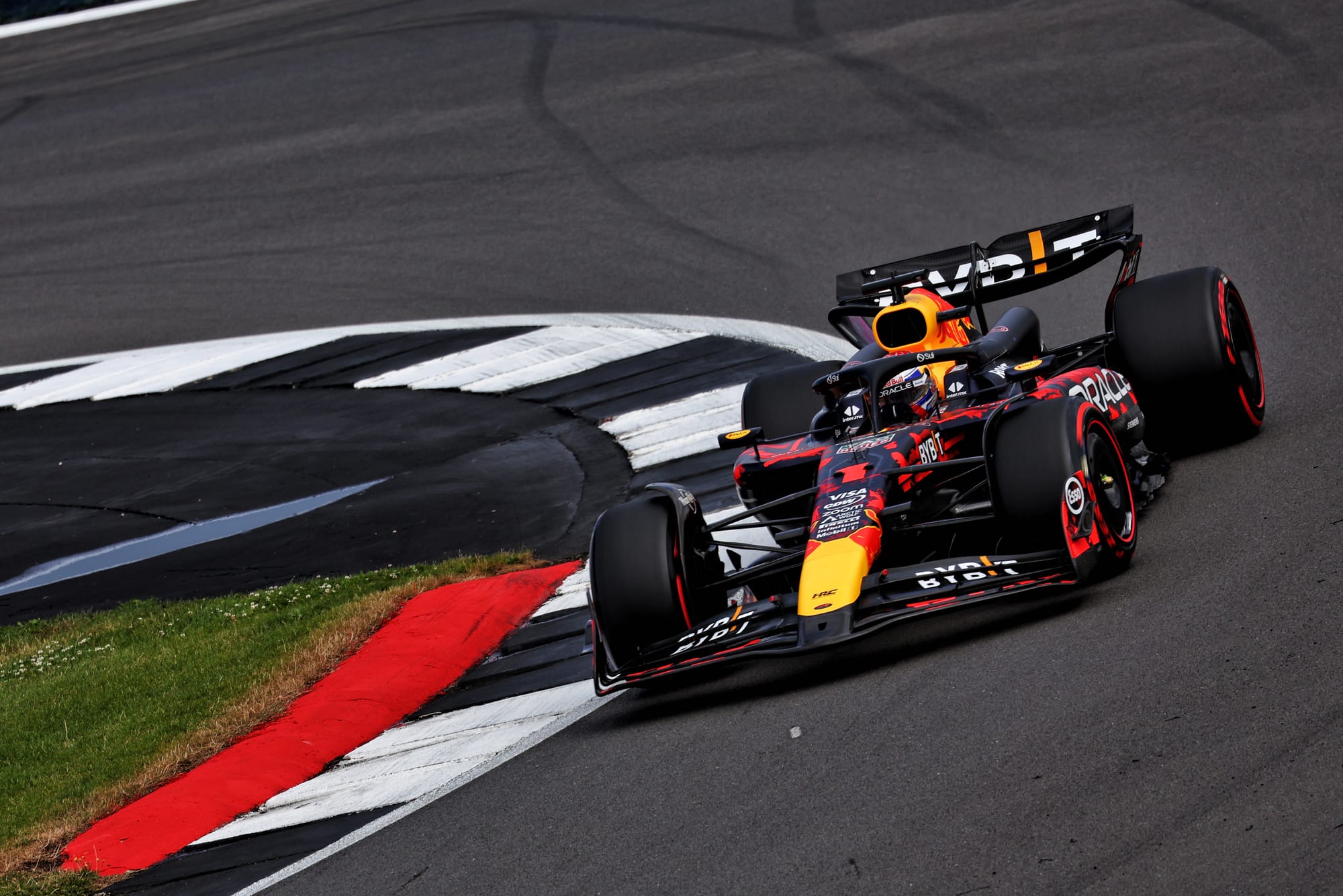
But the Red Bull wasn’t super well-balanced - and Verstappen ran it off into the gravel in Q1, damaging a tunnel strake which caused further underbody damage. It ran in that form for the remainder of qualifying and was clearly at less than its best. It was no longer a pole contender.
This was looking like it was all going Lando Norris’s way. With his main rival compromised and Ferrari not a factor, even carrying a bit more drag than the Mercedes, he could surely still out-pace them. He was fastest in Q2 by 0.164s over Russell.
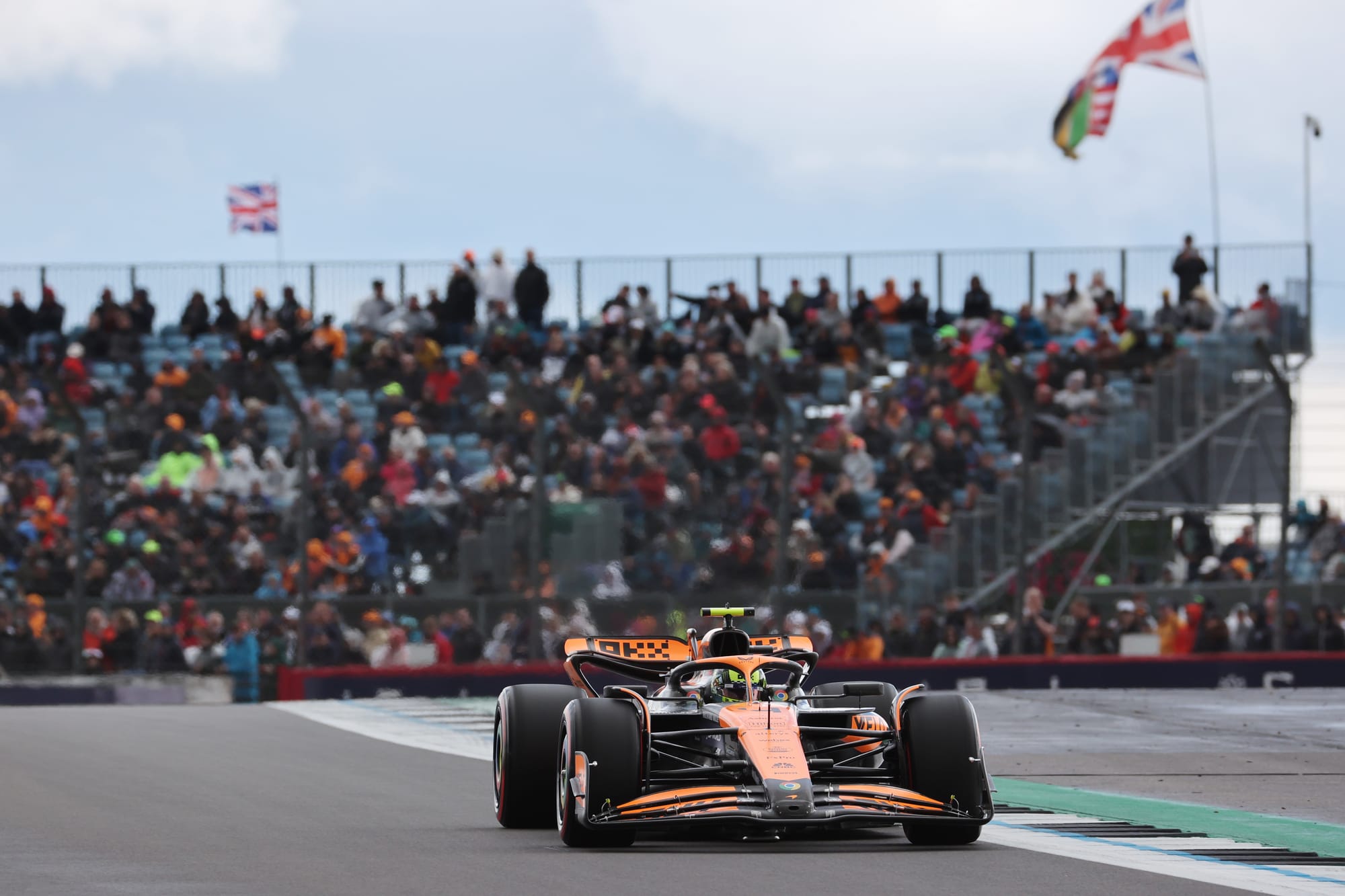
So how did he end up being outqualified by both Russell and Hamilton? Well, most obviously, Norris began his final lap badly after making a mistake on the approach to it through Vale - then another into Turn 3. He abandoned. But even his first Q3 lap had been marginally slower than Russell's (a scant 0.006s off).
Let Russell explain how everything was coming towards him. “In Q1 and Q2 there were times when I thought I was going to be out. It was really tricky. But into Q3 the conditions put the car in a perfect window. Also, a really big headwind had developed and I picked up loads through Turn 6 and 7 [Brooklands and Luffield] and it allowed me to brake really, really late. The car was just on rails and I had so much confidence. I think realistically we are still a tenth or two behind Lando and Max but…” But in the circumstances it was enough.
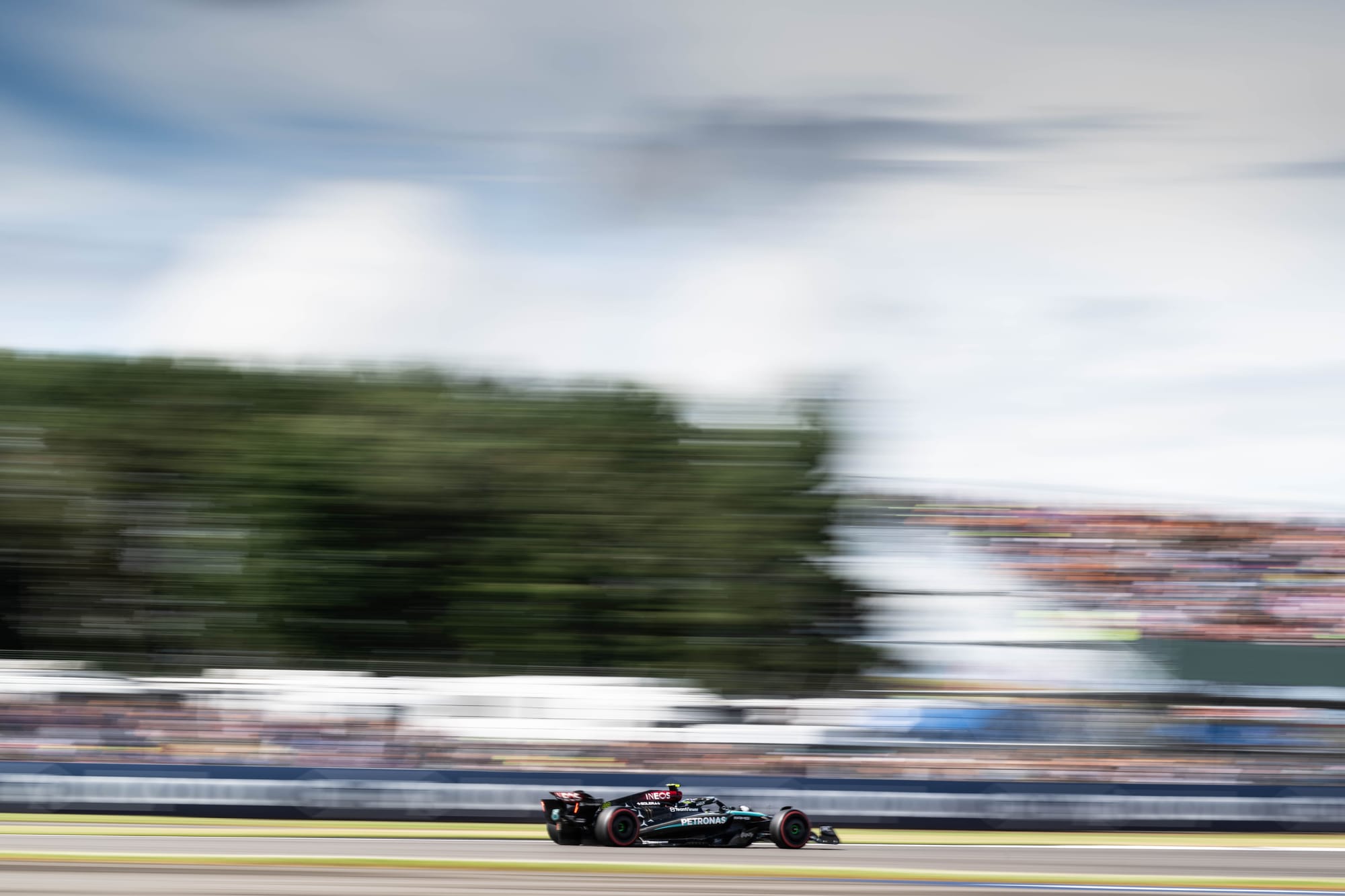
It looks like that increased wind between the Q3 runs allowed the lower-downforce Mercedes to pick up what it lacked to the McLaren before - and Russell was able to go with it. Looking at the GPS traces, Hamilton appears to have run slightly more wing than Russell - he takes time from him into all the slow corners and is slower at the end of all the straights. But it still looks a lower downforce set-up than either McLaren or, especially, Red Bull.
“We were from a potential point of view in position to get pole,” said McLaren team boss Andrea Stella. “But we didn’t put it together.
“Conditions in the first sector were a bit tricky. Lando had oversteer into Turn 3 and Turn 4. But we were gaining time and were ahead compared to our previous run - then there was a moment at Becketts. On data, we look pretty much on par with Mercedes over the lap.”
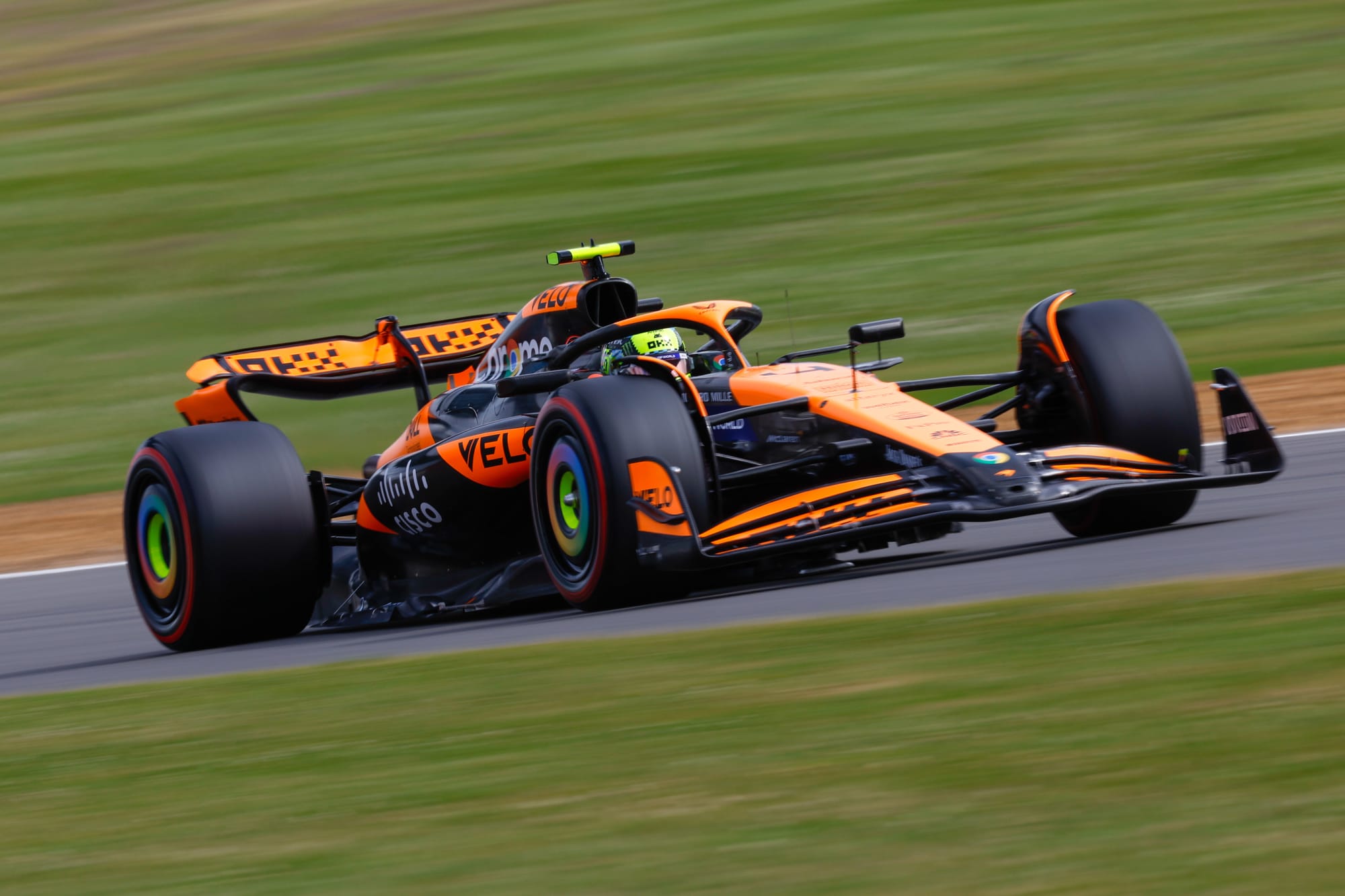
But over many of them? That greater downforce should in theory pay back dry or, especially, wet.
That said, the Mercedes is still improving. A little-noted update in Austria was a bigger, more powerful horizontal damper at the front. It gives a more stable aero platform, allows more exploitation of the much improved flow from the front wing introduced at Monaco. Both drivers were delighted with its balance around Silverstone.
So McLaren should have fought for pole with a more race-biased set-up than Mercedes. How would it - or the Mercedes - have fared against an undamaged version of Verstappen’s Red Bull? Who’s to say, but even before Verstappen ran it through the gravel it looked less complaint, more skittish than either the McLaren or Mercedes.
Its higher-downforce setting conferred a corner advantage even with the damage (Verstappen claimed this was worth as much as 100 points of downforce initially, worth up to a second) and its DRS advantage was just beginning to tell at the end of the straights before Copse and Stowe.
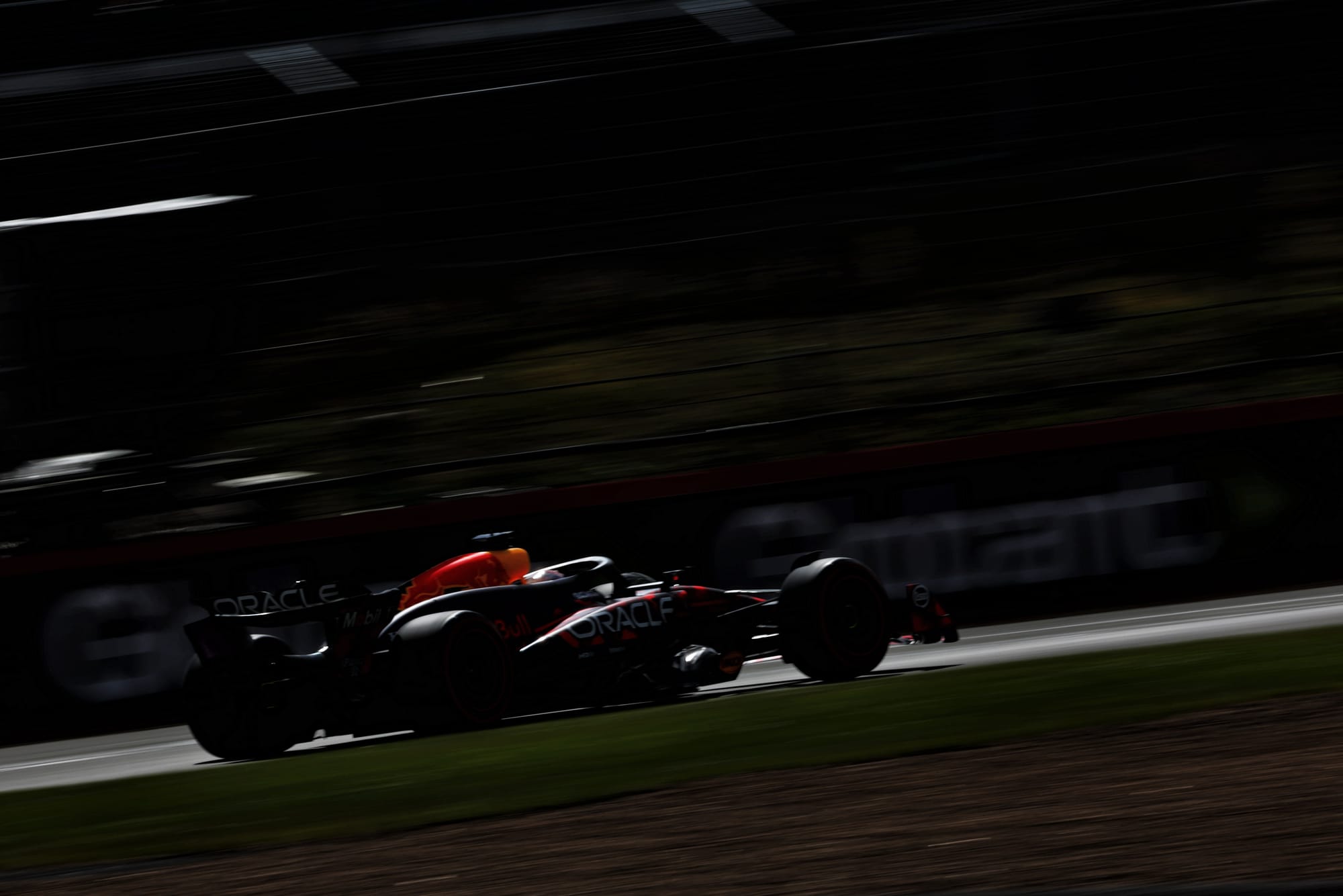
That said, there was a very significant loss for much of the straight before those corners. For example, Verstappen is 0.055s ahead of Russell on the lap by mid-corner Luffield, but by the time he arrives at Copse he’s 0.171s behind. That straight has lost the Red Bull 0.226s to the Mercedes and 0.109s to the McLaren. His loss on the Hangar Straight is 0.155s to the Mercedes and 0.033s to the McLaren.
But he’s significantly faster through Maggotts than either and takes time from them both into the braking areas of Village, Brooklands and Vale. The RB20 around a tricky Silverstone looks like a car which had the potential for a Verstappen to squeeze a pole from it - but which made it super-difficult even for him to extract that potential.
Much will depend on what the Silverstone weather gods have in store. But Russell for one is expecting “a very Montreal sort of race”, but with one difference. “My risk-reward dial will not be turned fully up this time.”
Russell, Hamilton, Norris and Verstappen are all in with a shout of this one.


